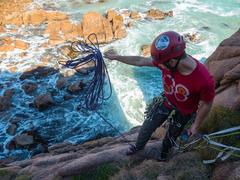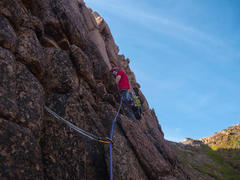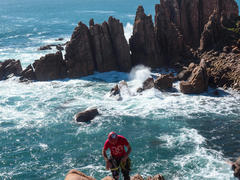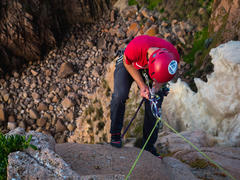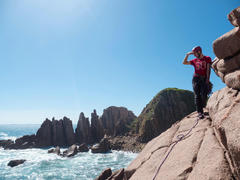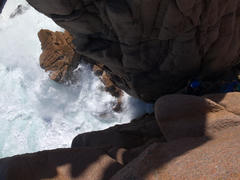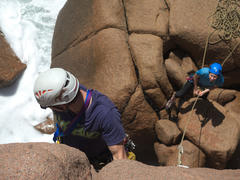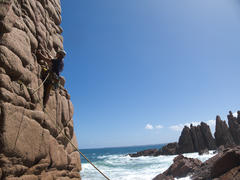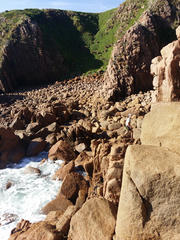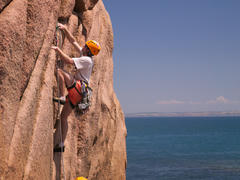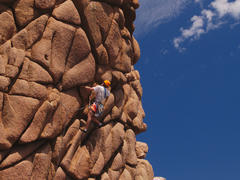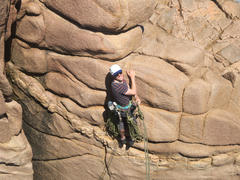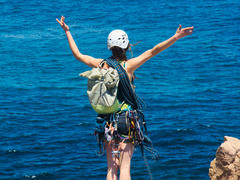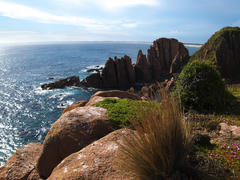Following on from my previous article about mistakes, I feel like it's finally time to write about what I feel has been my biggest series of mistakes so far, this happened several years ago. Photos are from various trips to Cape Woolamai over the years, no direct relation to the people or the events in this article.
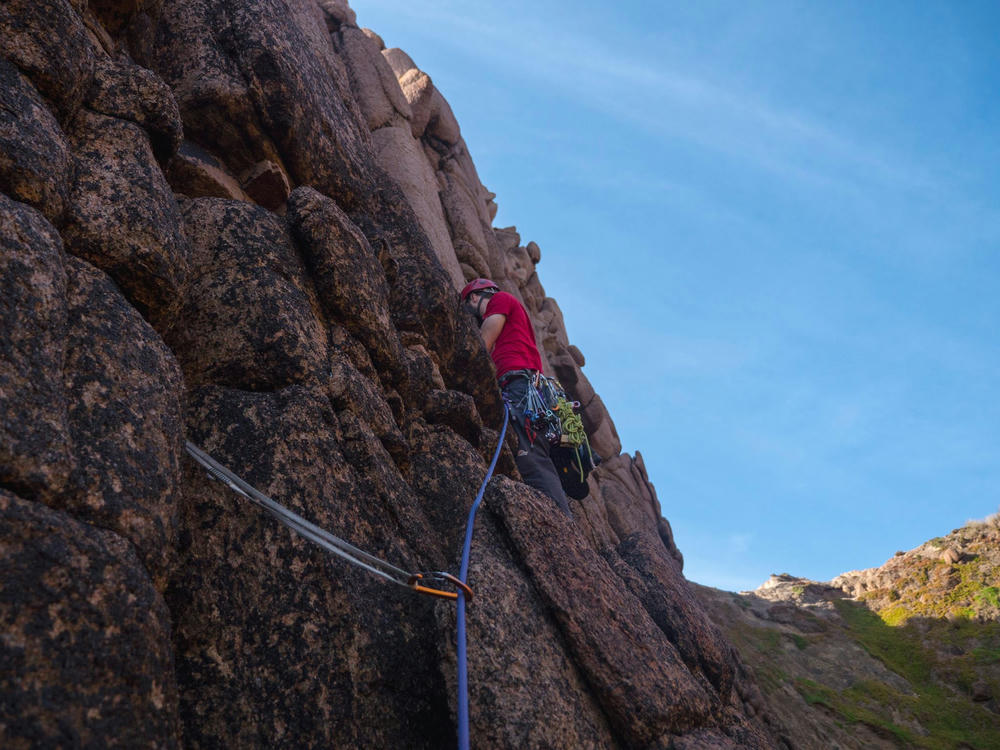
I had a friend who was new to climbing, they were very very keen to go on their first outdoor climb at the first opportunity. I was heading to Cape Woolamai for the second time with two other friends who were experienced climbers. In the week leading up to the trip I sent this message to that person:
"hey, so 4 of us are thinking of Woolamai, while there are some easy climbs there, it's also inherently a more risky place than somewhere like Arapiles, Werribie Gorge, or Mt Macedon due to loose rock and waves + tide. I'd be okay with you climbing with me, but just thought I'd better mention that so you're at least partially aware that it involves more risk than usual. There'll definitely be more chances during the holidays too. Anyway your call if you'd still like to come, I'm easy either way."
First mistake: don't offer to bring beginners to Cape Woolamai, it's not an appropriate place for teaching new climbers, there are too many risks involved and communication is difficult with the wind and the waves.
My head was in a strange place in the morning as we were driving to Phillip Island, I was feeling excited and proud. I was not in a headspace where I could admit my mistakes to my friends.
We walked in over the rocks along the coastline (rather than over the top), maybe the one good decision for the day, it takes slightly longer sometimes but it avoids the erosion present from people climbing down from the lookout. I think everyone should be taking this route if they wish to go climbing at Woolamai.
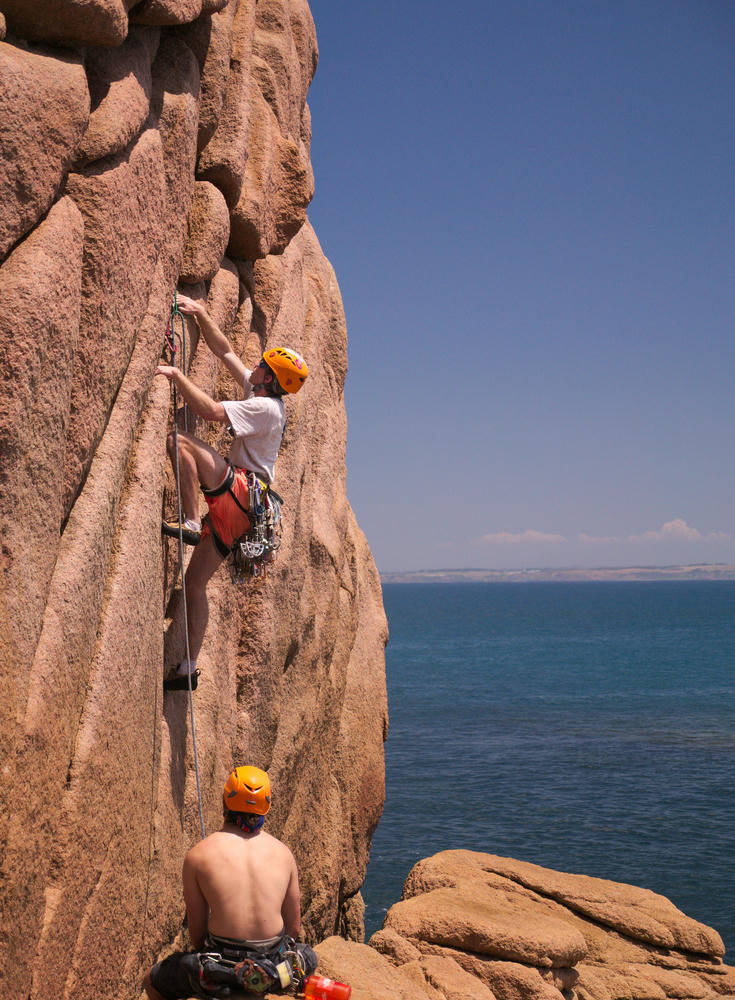
The place where we stopped was near a climb that my other two friends wished to try. There were no easy climbs nearby, but I decided for some strange reason that the grade 15 would be fine to do with my new climber. To its credit, from the ground the climb looked fairly well protected as far as Cape Woolamai goes.
As we are roping up my partner mentions this is the first time they have done lead belaying. This is news to me, I had assumed they had practiced this indoors. Another mistake: I should have made less assumptions about their experience, they sounded confident when they were talking with me about their climbing, but I didn't ask any questions.
Instead of stopping to think about the implications, I decide to continue, it's only grade 15 I'm not going to fall right? Another mistake. I'm thinking that I'm the only one who is taking a risk and I'm stupidly willing to accept the risk. I don't consider that if my partner drops me on a fall they will forever feel responsible for what is essentially my mistake. I also fail to consider that this probably won't be a fun climb for my partner's first outdoor experience.
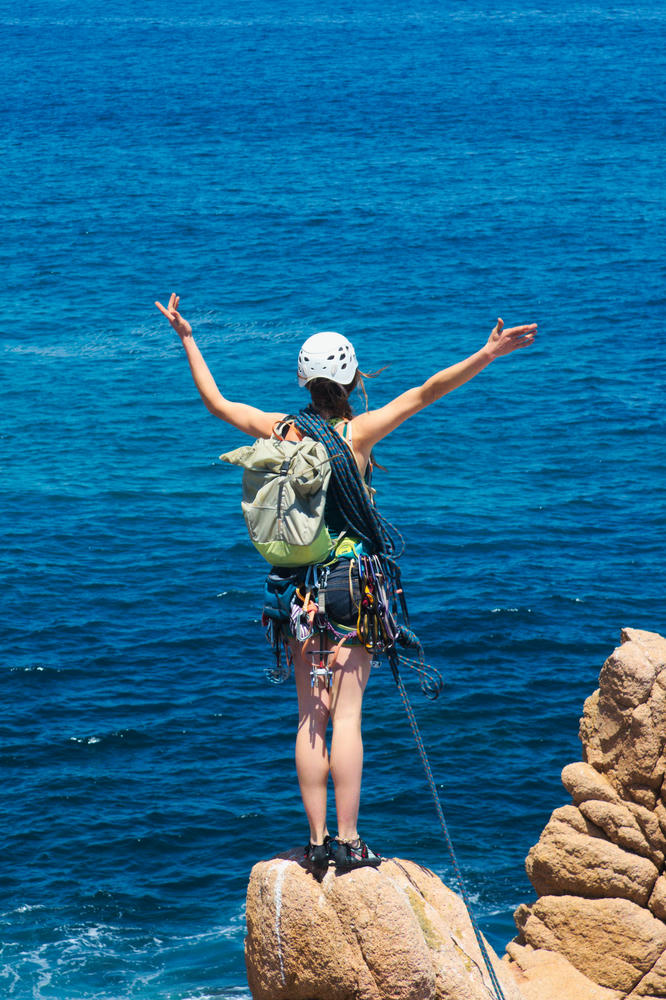
Luckily experienced climbing friend is watching this unfold. As I place the first few pieces of gear, and my partner fumbles with the belay, he speaks up, he wants to at least hold the rope as a backup for me on this climb, insisting that he isn't going to watch me kill myself (paraphrasing here).
As I continue up the climb, I reach a crux point where there is a large block, microwave or bar fridge size. It looks well attached, but I'm still a little worried, Woolamai has a bad reputation. As my only other piece of gear close to this point was a small cam placed sideways in a flaring crack, I figured perhaps I should place a nut under the block. I usually take the approach that if a block looks at all suspect, don't use it as protection; "it's better to fall alone". In this case, aside from some very slight misgivings about the block, the nut I had placed as protection looked reliable.
I spent a long time thinking about this piece of gear, and pumped myself out. As I went to pull past the block I yelled "watch me", and fell soon after. I fell and the piece held, and more importantly, my friend was holding the rope as a backup and perhaps saved my life.
I completed the climb and set up a belay on top. I had a lot of trouble communicating with my partner due to the noise of the waves, and it took them a long time to complete the climb. If there had been an issue during their climb, or had a rock fallen on them, it would have been difficult for me to notice without tying them off and rapelling down to where I could get line of sight. And so the obvious makes itself clear to me, when climbing with beginners, it is best to pick climbs where you can belay with line of sight.
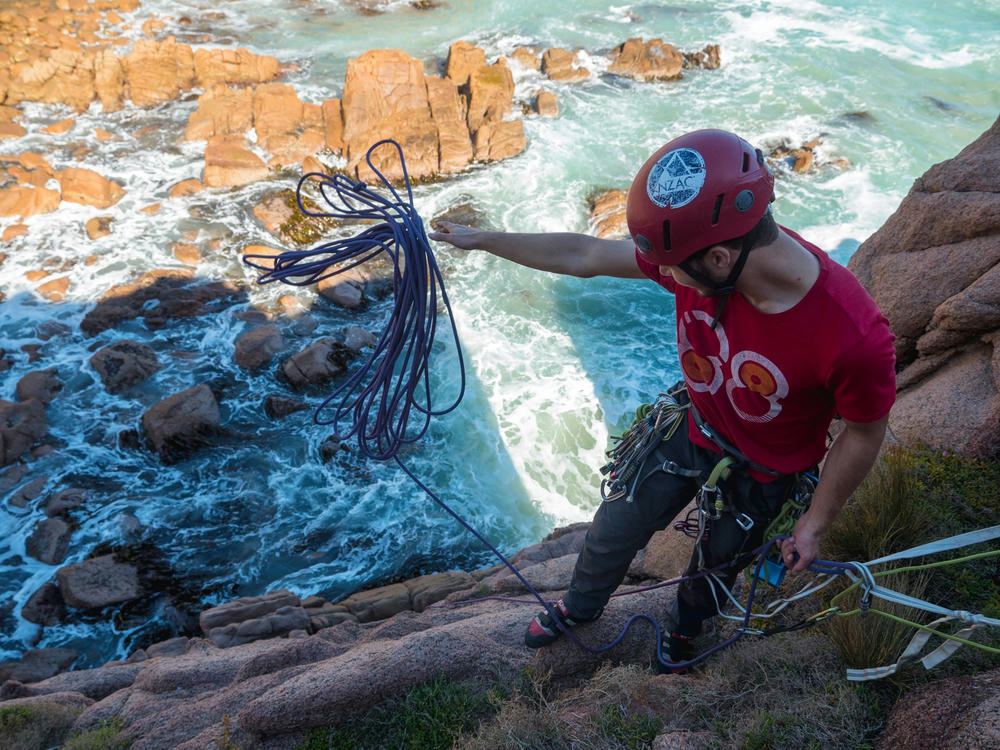
When my partner got to the top, we walked over to the abseil. Many abseils at Woolamai require exposed walking on loose rock, again not appropriate for beginners. I think (but I can't remember for certain) that at this point I decided to lower my partner down, perhaps finally recognising that I had made mistakes and it was time to take things conservatively. We made it down without any problems.
As we drove home I was incredibly embarrassed about my mistakes. I talked about them a bit with my friend who had held the rope, but I did not talk with my climbing partner.
Seeing the Same Mistakes
Years later I was back at Woolamai for perhaps my 6th time (I really do love the place!), and I witnessed another climber making some of the same mistakes. He was there with not one, but two complete beginners, with two helmets between three people. I asked him why he had chosen to go to Cape Woolamai for climbing rather than somewhere with better rock, and he stated that it was a convenient location for where they lived.
As he was climbing, I talked with his two beginner friends. They seemed rather impressed that he had been "mountaineering", and was very experienced. I couldn't help but notice that all his climbing gear looked brand new, coincidence perhaps. He had a strong accent so maybe he bought new gear when he got to Australia? He also had no extenders, and his rope was experiencing extreme drag.
The beginner belaying had his helmet sitting on the ground nearby. Myself and my friend suggested that it would be a good idea to wear his helmet because of the loose rock. He proceeded to take his hands off the belay rope and put his helmet on, we watched mortified. Soon after a bunch of loose bits come down the climb.
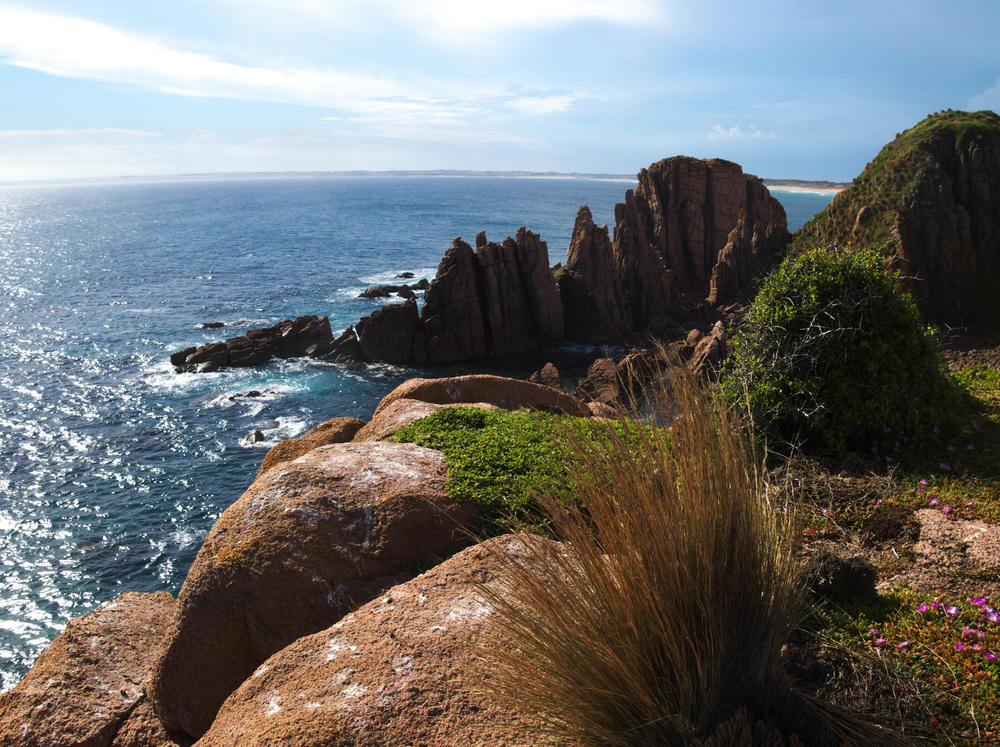
The climber reaches the top and takes a long time to build his anchor. He has his beginner partners climb on toprope. While he his waiting for his turn, one of the beginners positions himself under some climbers on another route. He isn't wearing a helmet. I can hear the climber above him sounding slightly distressed, and I suggest that he moves away, he takes one step forward and a rock the almost the size of his head falls and glances lightly off his back. My partner and I stare in disbelief, the beginner has no idea how serious that could have been.
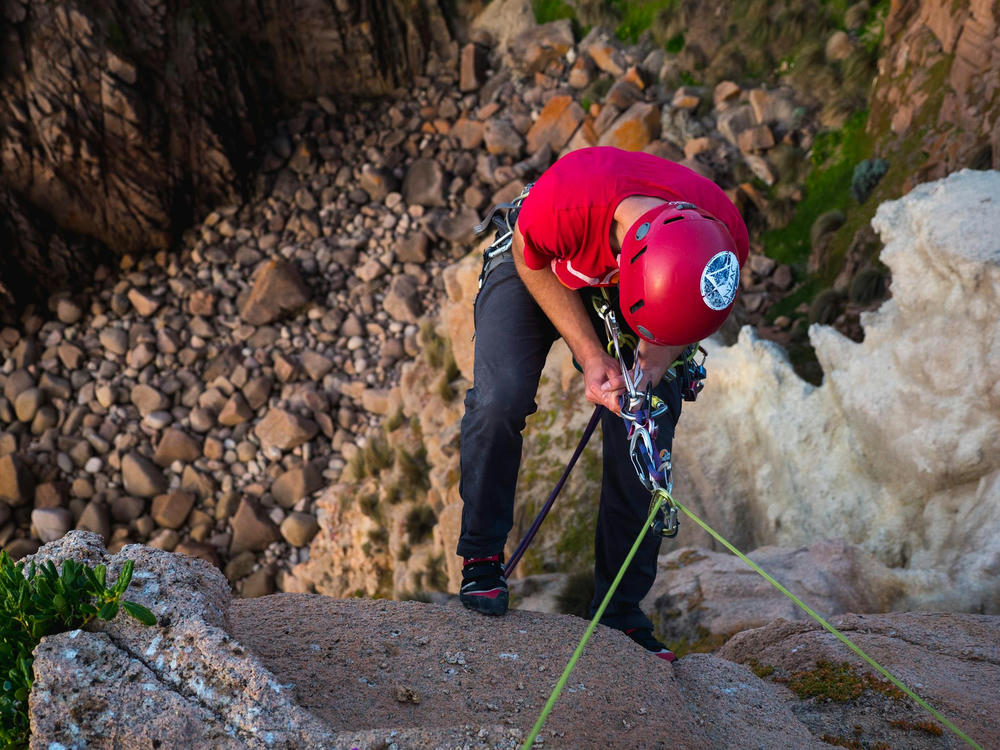
We do our climb, and at the top we observe the sketchy toprope anchor. As we make our way over to the descent, the climber from before climbs up and dismantles his anchor and throws his rope down. He comes over to us and we ask him how he is planning to get down without a rope, he says he isn't sure, but he'll just climb down somehow. We watch him for a minute as he tries to find a way down, and then we insist that he descends with us on abseil, he gladly accepts the offer.
Watching someone else making some of the same mistakes is part of what triggered me to write the last article. I went on soon after to finally have a proper discussion/debrief from my beginner partner about that day when I made my mistakes. I hope that by writing about it I can internalise some of the lessons, and hopefully it may be of some benefit to others. If you've had similar experiences, and you have the time, please write about it too, I'm sure many people would benefit from the learning available.
